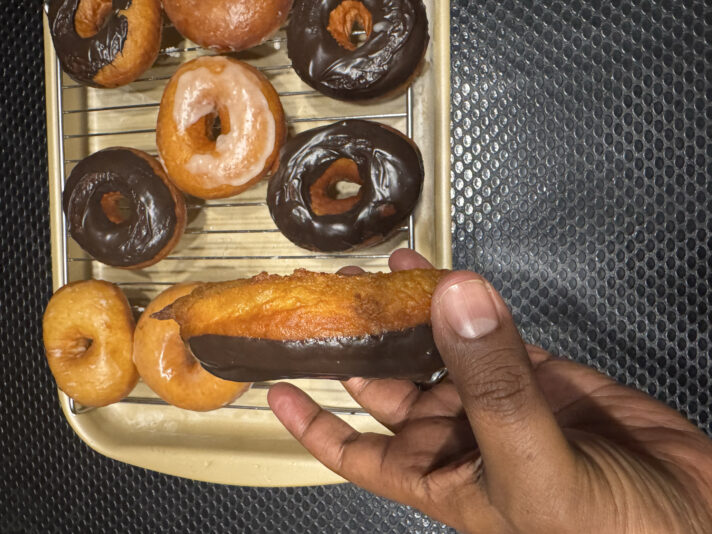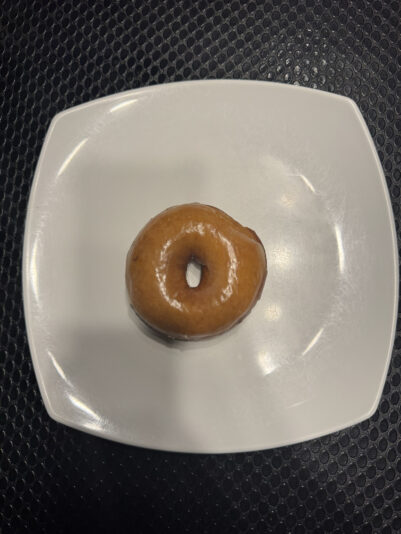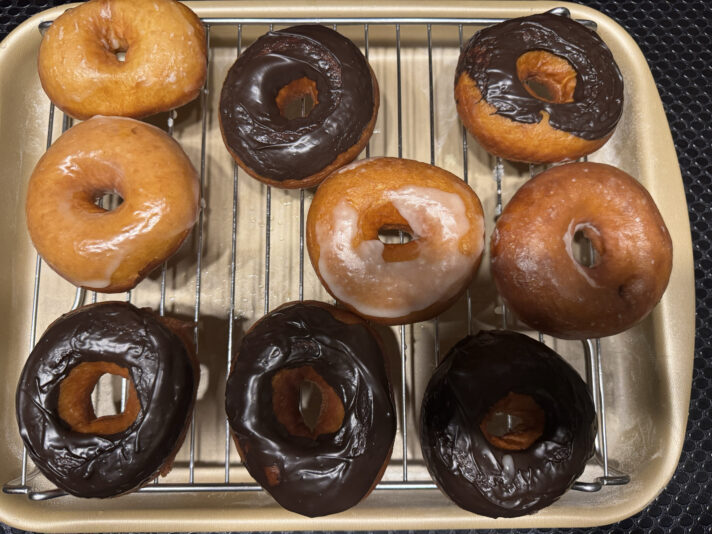Hello.
Welcome to the Scoolinary community, and thank you for your question!
It looks like you had several issues with your donut dough. Here are some possible causes and solutions:
1. Lack of elasticity and imperfect windowpane test
Possible cause: Inadequate flour type. If you’re using low-protein flour (less than 11%), the gluten network won’t develop properly. For pastry recipes, laminated dough, or fermented doughs, strong or medium-strength flour is recommended.
Solution:Make sure to use strong or medium-strength flour (11-12% protein).
If your flour has low protein content, you can add 1-2% wheat gluten to improve elasticity.
Another factor: Kneading. The recipe calls for 8-9 minutes of kneading in total. If your mixer isn’t developing the gluten properly, you may need to extend the kneading time or adjust the speed.
2. Very soft and hard-to-handle dough after fermentation
Possible cause: Using low-gluten/protein flour. Flour with less than 11% protein won’t absorb the amount of liquid in the recipe properly, making the dough feel softer and stickier.
Solution:
-Use bread flour with at least 11-12% protein to ensure better liquid absorption.
-If you only have access to low-protein flour, slightly reduce the water content (e.g., start with 700 g instead of 750 g and adjust based on texture).
-Another option is to add 1-2% wheat gluten to improve absorption and elasticity.
-This adjustment will help the dough develop a better structure and be easier to handle after fermentation.
3. Donuts are difficult to transfer after the second proofing
Possible cause: Overproofing or rough handling.
Solution:
Avoid overproofing. If the dough becomes too airy, it will be fragile.
To transfer the donuts without deforming them, use a floured spatula or place small squares of parchment paper under each donut before the final proofing.
4. Flat-bottomed donuts
Possible cause: Excess humidity during proofing or excessive pressure when rolling out the dough.
Solution:
Ensure the proofing environment is not too humid (90% humidity is ideal, but if the dough feels sticky, reduce it slightly).
Avoid pressing too hard when rolling out the dough.
Conclusion
✔ Check the flour type (minimum 11% protein).
✔ Adjust hydration if the dough is too soft.
✔ Handle carefully after the second proofing and use parchment paper.
✔ Avoid overproofing or pressing too hard when rolling out the dough.
I hope this information helps!Best regards.





